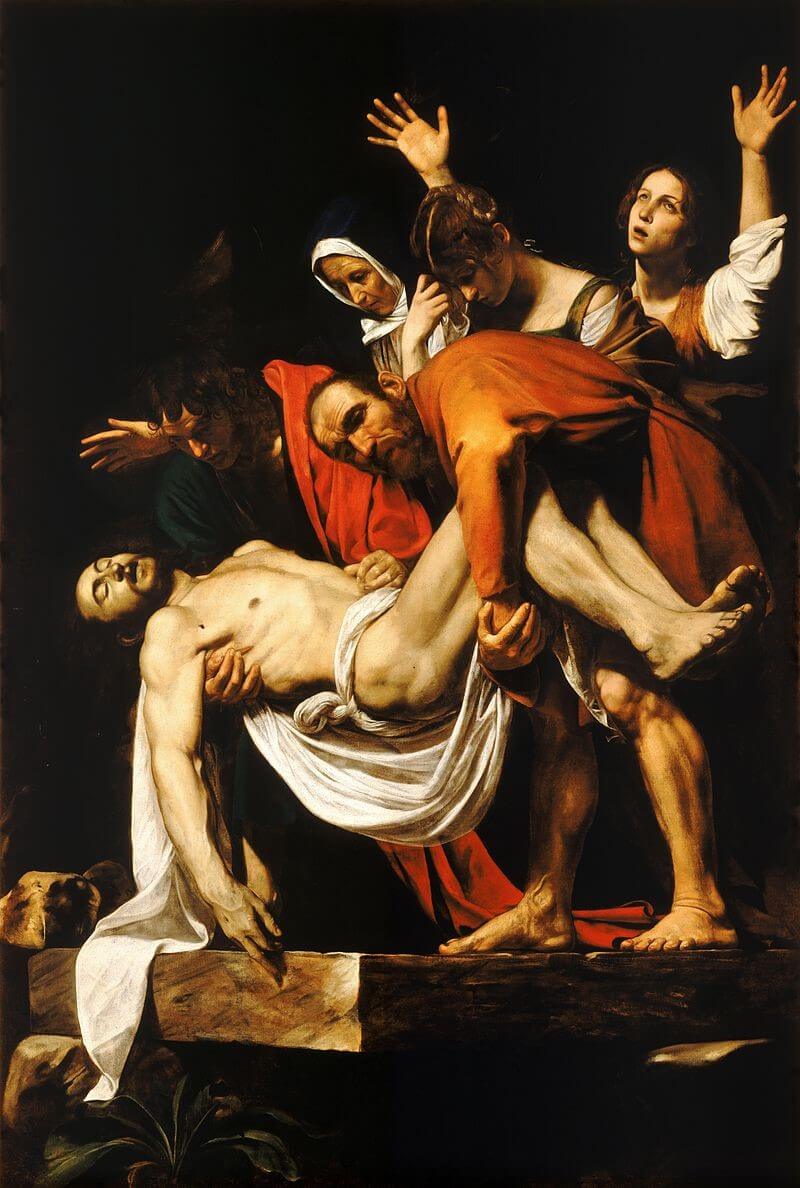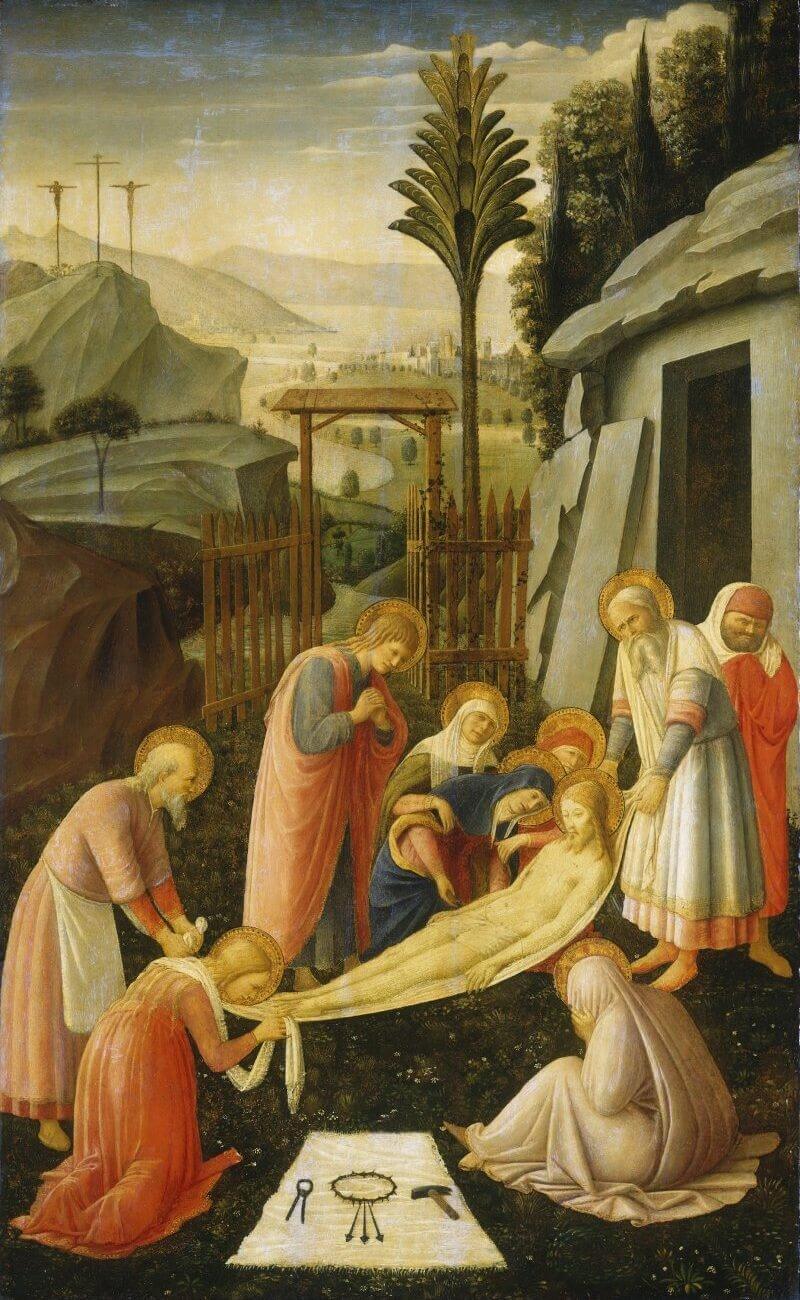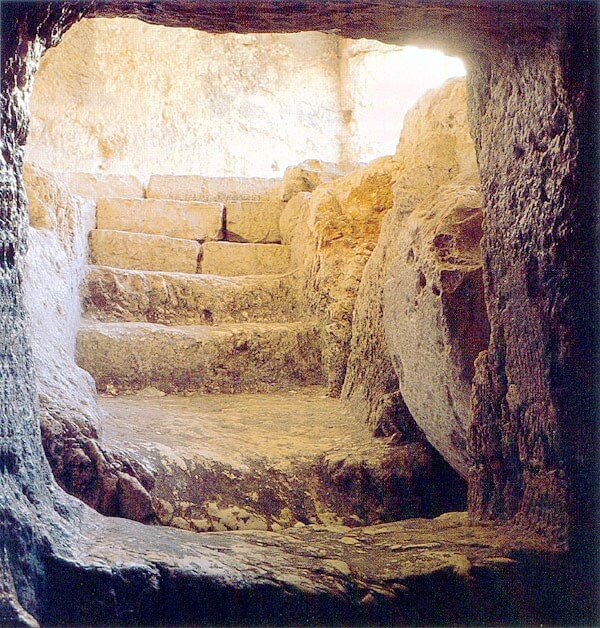Lenten Scribbles from...

JOSEPH OF ARIMATHEA
Scripture...
John 19:38-42
After these things, Joseph of Arimathea, who was a disciple of Jesus, though a secret one because of his fear of the Jews, asked Pilate to let him take away the body of Jesus. Pilate gave him permission; so he came and removed his body. Nicodemus, who had at first come to Jesus by night, also came, bringing a mixture of myrrh and aloes, weighing about a hundred pounds. They took the body of Jesus and wrapped it with the spices in linen cloths, according to the burial custom of the Jews. Now there was a garden in the place where he was crucified, and in the garden there was a new tomb in which no one had ever been laid. And so, because it was the Jewish day of Preparation, and the tomb was nearby, they laid Jesus there..
Art...

Entombment of Christ, Caravaggio
Take a moment to compare the two paintings of Christ's entombment: the tender and reverent Fra Angelico and the raw, emotional Caravaggio. See what reactions each evokes within you.
Michelangelo da Caravaggio, 1571-1610, was born in Milan. His father died of the plague when he was six and his mother raised her five children in poverty. Known mononymously as Caravaggio, he is best known for his realistic representation of human physical form and emotion. He was a master of chiaroscuro, the use of contrasting light and dark to direct the viewers attention and add intensity and drama to the scene. He preferred to paint directly from life without the use of preliminary drawings and created a broad range of work, both non-religious and religious. His fame as a painter rose as did his reputation for brawling and being a violent, provocative man. After a brawl in which he killed a man, he fled Naples for Rome, where he continued to paint and to leave a record of arrests. He later returned to Naples, but once again fled after a similar incident and died in uncertain circumstances.

Entombment - Fra Angelico
Fra Angelico, 1395-1456, was a Dominican Friar. Born Guido di Pietro, he took the name Fra Giovanni Angelico (Brother John of the Angels) upon entering religious life. He lived and painted largely in Florence in the San Marco Priory where the walls are decorated with many of his frescoes. Religious themes were his only subjects and he created a characteristic style of simplicity and devotion. He led a devout, ascetic life and became known as much for his piety as for his talent, becoming known simply as of Fra Angelico or "angelic brother." He brought his love of Christ to bear in his paintings creating scenes that were tender and evocative, with quiet emotion. In 1982, he was beatified by Pope John Paul, II, "because of the perfect integrity of his life and the almost divine beauty of the images he painted."
As divergent as are the artists and their styles, each picture touches a responsive chord, and it is easy to imagine either one of them in the scene they portray. Surely the shadow of Christ's cross stretches over both of these lives as does the promise of redemption that it offers.
Background...
Collectively, the Gospels describe Joseph as: “a rich man from Arimathea who had become a disciple of Jesus” (Mt 27:57), “a distinguished member of the Council,” [the Sanhedrin] “who was awaiting the Kingdom of God” (Mk 15:43), “a member of the Council, a good and upright man, who had not consented to their decision and action” (Lk 23:51), and “a secret disciple of Jesus” (Jn 19:38). His actions are described by Mark as bold and by John as being in cooperation with Nicodemus. In every case, he procures the tomb, removes Jesus from the cross, and lays Jesus in the new tomb.
His companion, Nicodemus, is the one who comes by night to see Jesus, a visit that leads to one of Jesus' longest discourses, Jn 3:1-21. Later, after a failed attempt to arrest Jesus, Nicodemus speaks to the agitated Pharisees saying, "Our Law does not judge people without first giving them a hearing to find out what they are doing, does it?" (Jn 7:51). It is good to be reminded of the division of opinion among the Pharisees as regards Jesus, evident also in Acts 5:34-40, where we encounter Gamaliel, the teacher of Saul.
Together, Joseph and Nicodemus, use their status to intercede for Jesus and provide a proper burial. Jewish Law required that a body not be left unburied overnight. It was the custom for the family of the deceased to carry the body to the burial place, though Jesus was attended to only by women and John. It was not something you would do for a stranger because handling the dead was considered unclean. So the actions of Joseph and Nicodemus are a testimony to their courage, fidelity, and love of Jesus.
In the non-Canonical gospels of Peter and Nicodemus, Joseph and Nicodemus are taken into custody by the Jewish authorities, eloquently defend their actions, and are then miraculously freed. This, too, can serve as reminder that as much as the women are to be praised for their presence at the crucifixion, the men followers of Jesus were at real risk in a way the women were, likely, not. Both Joseph and Nicodemus, however, were willing to take that risk and did.
To Ponder...
Some questions to consider:
1. It is fascinating that he is a member of both the Jewish Council and the circle of Jesus’ followers. How did he reconcile that tension?
2. Who do you know and admire who lives in the tension between opposing views without losing their own center? Can that place be maintained?
3. What motivated him? What did he risk?
4. How did others perceive him? What was his connection to Nicodemus?
5. What ended up happening to Joseph?
6. Who do you think of as a modern day Joseph for using and risking their position in the service of others?
The following Midrash is presented in the words of Joseph of Arimathea:Midrash...
Oh, I must hurry. Get to Pilate before it turns dark. Get to Pilate before Caiphas does with some dreadful scheme to dispose of his body or leave him to the crows. And, yes, I must choose my words carefully. Straight and simple, humble, respectful. Bow before authority, beg permission. Perhaps even Pilate will give in to my request.
Nicodemus. I hope he hastens as well. Gets the myrrh and the aloe. We can wrap him in the burial cloths—those strips so like swaddling clothes. We come into this world and we are wrapped. We go out of this world and we are wrapped.
It is not so far away, the cave. With the women and Nicodemus, we can carry him there.
How strange. I cannot even recall how we came by that tomb. Someone from my wife’s family, I believe. But it will do. A quiet, shaded place. Rather lovely, actually.
A garden. Did not life begin in a garden? Adam’s garden, where it all began.
A cave. I heard he was born in a cave. Born in a cave; buried in a cave. It comes full circle.
Can life come from this death? I cannot see how. But, oh how he spoke love’s power over death! Oh how he spoke of eternal life! I give him this final gift. I give him back to his Father and wait to see what will come of it all. What will he do with this gift I give him?
The original of this Midrash was created by the women of Maplewood Presbyterian Church, Edmonds, WA, many years ago. It has since been revised, but the concept is a creative response to their consideration of the burial of Jesus and the role of Joseph of Arimathea. My time of collaborating with them was rich indeed, and I am still in their debt. Blessings on your Holy Week, good folk at Maplewood.
Music...
The cello lends its unique and resonant sound to this event in the Passion narrative. Allow yourself a few moments to simply listen and to mourn:
Responses from Readers...
I love reading your posts for Lent. I am moved and touched by the writing, your inclusion of art and the dance. So many ways to communicate the love of Jesus for each of us!
The story of you, seeing the Pieta at the 1964 World’s Fair was so interesting. I was there too. At the time I was attending The Morgan School, in Clinton CT., and my choir from that school was invited to sing at the World’s Fair. Unfortunately, I don’t think we got to see the Pieta….someday! Thank you - Margie
On the Botticelli – loved the colors on the piece, it’s so colorful. The emotion on Mary Magdalene is wonderful. I wonder why he made Mary look like an old nun in black? I agree – I don’t like a fainting Mary. - Peg
Your reflection are so profound yet so simple and human. Thank you for sharing your gifts with us. Easter blessings on you and yours!! Ps. Like you, I can never picture a “swooning “ Mary. - Lucille
Every year at this time I miss St. Thomas More on good Friday. It was an amazing experience. The silent procession of the cross, the "deafening " sound of the hammer on the nail, everything else silent. We all took off our shoes, for we were on "holy ground".
Every year I said to myself, I will not kiss that cross this time. I hate it, I abhor the sufferings of my Lord. And every year I did it anyway, out of love for Him. The Asian community made sure the church was filled and overflowing. It was a chance to stand up and be counted as people who will stand by our Lord in His time of suffering, and not abandon Him. My new church can't hold a candle to the reverence of St. Thomas More. This time of holiness is engraved in my memory forever. - Sheila
Wow, what a powerful presentation you have given us this week! Thank you for the history and especially the clarification of the Marys...all I have to do is remember them now 🙂 The Pieta was wonderful especially the video link. Extraordinary video and insights into Michelangelo's artistry...Thank you for bringing this beautiful art to us and also the link to Martha Graham's Lamentation. It was a little long for me but I could appreciate her artistry in capturing Mary's pain. The midrash was very good and again, thought-provoking and emotional. You have given me much to enjoy, ponder and reflect on. And you have broadened my knowledge of the history and scriptures and I very grateful. - Nan
Excellent. I especially enjoy the art you select. - Karen



